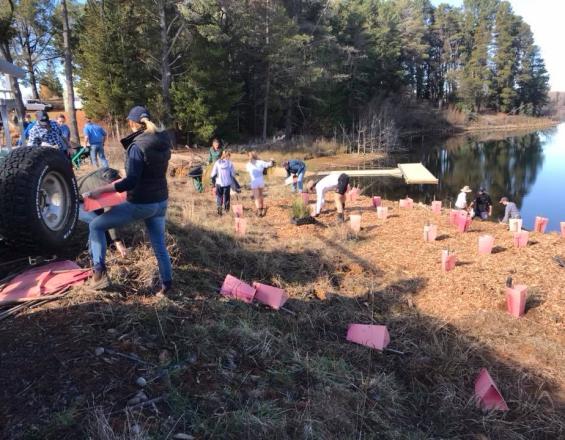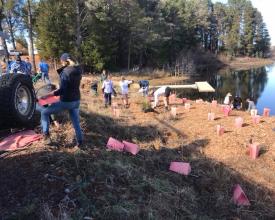
Rowers and restoration at Spring Creek, New South Wales

The Kinross Wolaroi School Rowing Programme launched a project to restore degraded land around the Spring Creek reservoir. The city-owned reservoir, where rowers from the school come to practice, is separated from agricultural land by only a small strip of vegetation composed mostly of non-native and invasive plants. These plants consume more water than the native species, further exacerbating the effects of ongoing drought conditions, which have reduced the reservoir to 30% of its capacity. Run-off from nearby farming compromises water quality, which is a problem for local rowers as well as for two endangered duck species observed at the reservoir. In order to create a beautiful, healthy area for sport and high-quality habitat for birds, rowers presented a restoration plan to the city council for support. Following the guidance of an environmental consultant and with funding from the city, the team hosted community workdays to clear invasive species from a section of the shore and plant native plants.
Impacts
Removal of thirsty non-native trees has lowered the demand on the drought-stressed reservoir, leaving more water to support biodiversity and rowing activities. Urban river sites are often degraded, and improvement efforts like those seen at Spring Creek can have significant impacts on local biodiversity. To incentivise future sustainability and conservation efforts by the rowing community, the World Rowing Federation (FISA) recognises exceptional contributions like the Spring Creek project with the World Rowing Sustainability Award. FISA provides rowers with guidelines to emphasise positive biodiversity impacts in event and venue planning through their sustainability goals. In this way, the sports federation, local sports team, and host city can work together to support positive biodiversity outcomes. The project succeeded in mobilising the local community to undertake vital ecological restoration work. Future plans include linking the restoration work with school curricula and further expanding the high-quality habitat patch around the reservoir.



